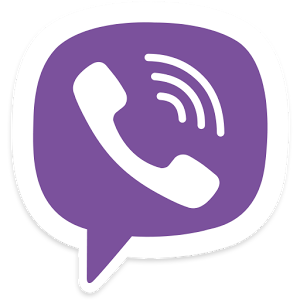Let us know what type of content you'd like to see more of. Fill out our three question survey.
App-a-Thon 2016: Viber for Development
Oct 23, 2016
As we’ve ramped up our Digital Insights work over the last few months, we’ve had the opportunity to talk with people around Africa, Asia, Latin America, and the Middle East about the digital tools they use to stay in touch with each other and the world around them. These conversations have reminded us that we have to work hard to stay on top of the growing number of messaging apps on the market today, as what was popular six months ago might no longer be today. “App-a-Thon 2016” is our way of quickly immersing ourselves in different messaging apps to learn about their functionality, look, and feel. How does it work? The entire DAI ICT team signs up for a platform, and for one week, we use it to chat with each other, send images and video, and explore the quirks and features of the app.
So far, we’ve covered WhatsApp, Facebook Messenger, Telegram, kik, LINE, and BBM. This time around we’re checking out Viber.

Key functionalities: Send and receive text, photo, doodles, audio, and video messages; share money (via Western Union), files, and geo-locations. Voice calls to other Viber users via web and calls to mobiles/landline phones via Viber Out (an associated app). Create public chats to broadcast messages. Desktop application available for Windows, Mac, and Linux. A Viber plugin is available for Google Chrome, but it requires desktop application to be installed. Free to use and download. Viber Out costs money to make calls.
Pros: Offers a series of professional features including promotional stickers, official public chats, and API-based features to message constituents. Encrypted chats to individuals and groups.
Cons: No browser-based version. Undocumented security infrastructure.
Commentary
Anand: I found Viber’s user interface simple enough, and it has all the features one would expect of a messaging app. As I understand, it started off as a competitor to Skype, rather than as a competitor to other messaging apps. This might explain some of its focus on calls (via Viber Out). At this stage in App-a-Thon 2016, after having reviewed so many apps, it’s hard to tell what makes Viber stand out from the crowd other than its geographical footprint, which is one of the most interesting (and almost haphazard) of all the messaging apps we’ve studied, as this map shows. It’s popular in places like Mali, Libya, Iraq, Myanmar, and as of April this year, 65 percent of Android phone in Ukraine had it installed. The app itself was founded in 2010 in Cyprus, was bought by the Japanese e-commerce company Rakuten last year, and is expanding its corporate presence into Southeast Asia and Eastern Europe. This cosmopolitan flair is unlikely to affect user uptake, but the fact that it’s popular in such diverse markets means they must be doing something right.
John: Viber stands out with its deep purple user-interface elements and some of the basic functions you see in other messaging applications. Viber groups top out at 200 maximum participants, which makes it a great choice for mobilizing customer bases in the small to medium range. Viber received some criticism for not detailing its security. Specifically, it has yet to publish details of the security systems implemented on the platform. As Anand noted, the geographic spread of adoption is interesting with several countries in Asia making use of it with a smattering of countries in other regions of the world, including Ireland and Haiti.
So what do we conclude?
Overall this is a great tool for doing all core messaging functions. Be sure to research user adoption in your project location before adopting a platform for message delivery. With an API and (supposedly) secure communications lines, this is a great tool for automating messaging content, sending notifications, and setting up message broadcasts triggered by external events like market prices or weather information.
Interested in hearing more about other the other apps we tested in App-a-Thon 2016? Subscribe now to receive a weekly digest of our newest blogs sent directly to your inbox!